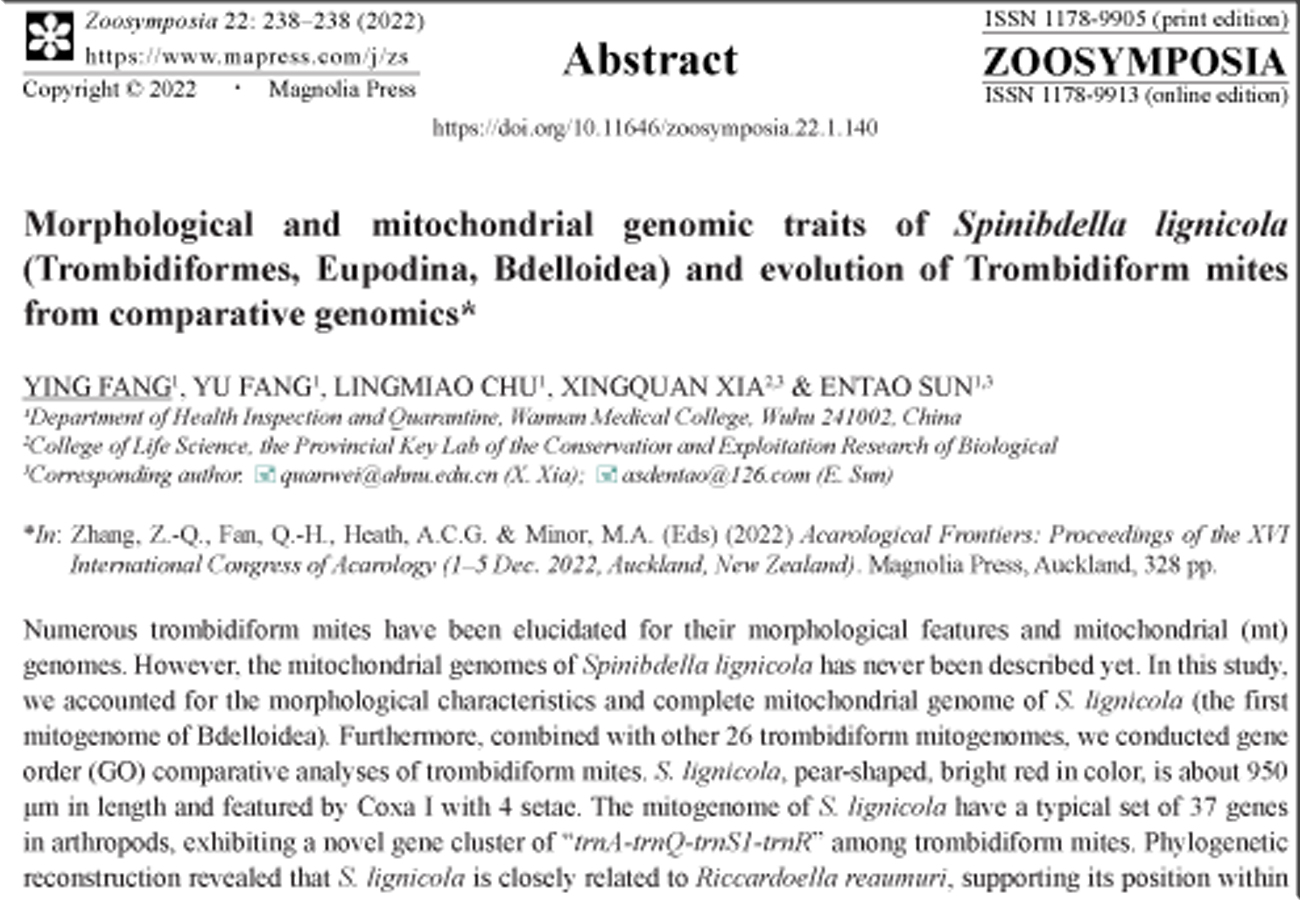Abstract
Numerous trombidiform mites have been elucidated for their morphological features and mitochondrial (mt) genomes. However, the mitochondrial genomes of Spinibdella lignicola has never been described yet. In this study, we accounted for the morphological characteristics and complete mitochondrial genome of S. lignicola (the first mitogenome of Bdelloidea). Furthermore, combined with other 26 trombidiform mitogenomes, we conducted gene order (GO) comparative analyses of trombidiform mites. S. lignicola, pear-shaped, bright red in color, is about 950 μm in length and featured by Coxa I with 4 setae. The mitogenome of S. lignicola have a typical set of 37 genes in arthropods, exhibiting a novel gene cluster of “trnA-trnQ-trnS1-trnR” among trombidiform mites. Phylogenetic reconstruction revealed that S. lignicola is closely related to Riccardoella reaumuri, supporting its position within Eupodides. In line with previous studies, the monophyly of Trombidiformes is rejected beacuse the Eriophyoidea lies outside of Trombidiformes. Four derived gene clusters (cox1~cox3; nad6~trnS2; nad1-trnL2; trnM~trnC) were suggested as synapomorphies in trombidiform mites. Furthermore, we propose the possible ancestral GO of Trombidiformes and provide GO evidence for eriophyoid mites evolving independently from non-eriophyoid trombidiform mites. Our study confirms that comparative analysis of GO is a valuable information approach in improving our understanding of mitogenome evolution and phylogeny of trombidiform mites.
References
-

